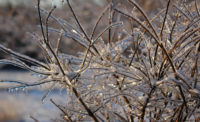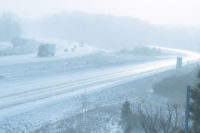 Being prepared can help travelers avoid dangerous situations in winter, says the American Industrial Hygiene Association (AIHA), which is passing along some travel safety tips from the Centers for Disease Control and Prevention (CDC) that are especially useful this season.
Being prepared can help travelers avoid dangerous situations in winter, says the American Industrial Hygiene Association (AIHA), which is passing along some travel safety tips from the Centers for Disease Control and Prevention (CDC) that are especially useful this season.
First, winterize your car:
- Perform routine maintenance to be sure that your car is in good operating
- condition
- Check your tires and replace them with all-weather or snow tires if necessary
- Keep your gas tank full to help prevent ice build-up in your car’s fuel lines
- Add a wintertime formula in your windshield washer
-
Always have an emergency kit in your car which includes:
- First aid kit, blankets, “ready to eat” food, and water
- Booster cables, tire jack, spare tire, tire pump, flares, and a bag of sand for traction
- Flashlight, compass, and maps
- Battery-powered radio and extra batteries
If you must travel when a weather advisory has been issued:
- Inform family members of your travel plans and estimated arrival time
- Carry a mobile phone with a fully charged battery in case of emergency
If you become stranded with your vehicle:
- If you are unable to move to a safe location within 100 yards, stay with your vehicle
- Alert other drivers of your condition by remaining as visible as possible. Tying a bright cloth to the antenna, raising the hood of the car, and turning on the interior lights will signal other drivers.
- Maintain the vehicle’s battery power by running the engine and heater for only 10 minutes every hour. For proper ventilation inside the vehicle, make sure the tailpipe is not blocked.
Regardless of the season, you should always avoid drinking and driving, and don’t let someone else drink and drive. Whether you’re the driver or passenger, wear a seatbelt and be sure that all children are secured in a child seat.
Click here for more travel safety tips from the CDC.



